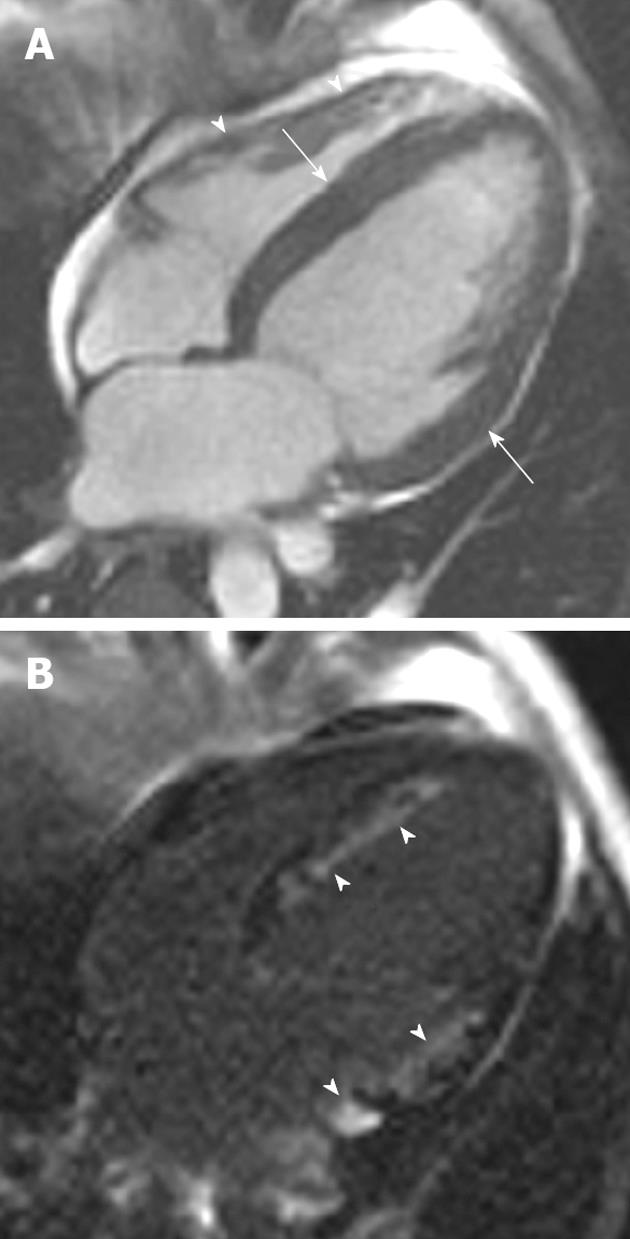Copyright
©2012 Baishideng Publishing Group Co.
World J Cardiol. May 26, 2012; 4(5): 173-182
Published online May 26, 2012. doi: 10.4330/wjc.v4.i5.173
Published online May 26, 2012. doi: 10.4330/wjc.v4.i5.173
Figure 6 A 38-year-old man presented with progressive shortness of breath.
Serum measurements demonstrated hypereosinophilia. A: Horizontal long-axis SSFP sequence showing mild circumferential hypertrophy of the left ventricle (arrows) Note the normal thin right ventricular free wall (arrowheads), a useful differentiating feature from cardiac amyloid; B: Late-enhanced horizontal long-axis sequence showing extensive high signal in the typical subendocardial distribution (arrowheads) of eosinophilic myocardial infiltration. Cardiac amyloid is the principal other cardiomyopathy that mimics this late gadolinium enhancement appearance.
- Citation: O’Neill AC, McDermott S, Ridge CA, Keane D, Dodd JD. Investigation of cardiomyopathy using cardiac magnetic resonance imaging part 2: Rare phenotypes. World J Cardiol 2012; 4(5): 173-182
- URL: https://www.wjgnet.com/1949-8462/full/v4/i5/173.htm
- DOI: https://dx.doi.org/10.4330/wjc.v4.i5.173









